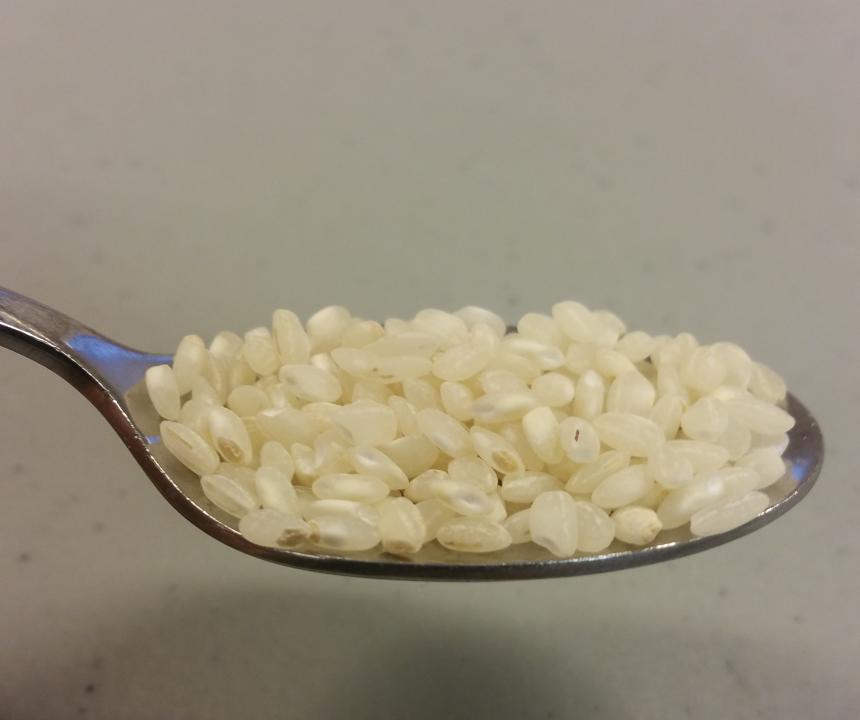The earth is nearly 4.6 billion years old. It’s difficult to grasp the vastness of such a large number, for children and adults alike. This experiment, which is a great classroom activity, helps you visualize the vast age of the earth by using rice. It also includes some training in understanding volume and the decimal number system.

Equipment
- 1 pack of rice
- 1 teaspoon
- 1 measuring cup
- 12 sticks, one meter in lenght (optional)
- Tape (optional)
Instructions
- Show a teaspoon of rice to the students and ask them to guess how many grains of rice there are. A teaspoon of rice is about 5 ml and contains about 250 grains. You can also let the students count the rice grains in groups. Did each group get the same result? Calculate the average number of rice grains in 1 ml rice. It should be about 50 per ml.
- One grain of rice symbolizes 1 year. How much room will 4.6 billion grains of rice require? You can calculate this, as showed in the table below, with the starting point that 50 grains of rice (years) is 1 ml. How many grains of rice will fit in a cube meter? You have the option to make a cube of this size by taping together the four sticks, which helps with visualization. Maybe you can also investigate how many children can fit inside this cube? One cube meter can hold 50 000 000 (50 million) grains of rice. This means that you need nearly 100 of these cubes to hold the grains of rice equivalent to the age of the earth.
| Volume | Approximate number of grains | |
| 1 ml | 1 cm3 | 50 |
| 10 ml | 10 cm3 | 500 |
| 1 dl | 100 cm3 | 5 000 |
| 1 l | 1 000 cm3 = 1 dm3 | 50 000 |
| 10 l | 10 000 cm3 = 10 dm3 | 500 000 |
| 100 l | 100 000 cm3 = 100 dm3 | 5 000 000 |
| 1 000 l | 1 000 000 cm3 = 1 m3 | 50 000 000 |
| 10 000 l | 10 000 000 cm3 = 10 m3 | 500 000 000 |
| 100 000 l | 100 000 000 cm3 = 100 m3 | 5 000 000 000 |
The earth is nearly 4.6 billion years old. It’s difficult to grasp the vastness of such a large number, for children and adults alike. This experiment, which is a great classroom activity, helps you visualize the vast age of the earth by using rice. It also includes some training in understanding volume and the decimal….Click to read more
